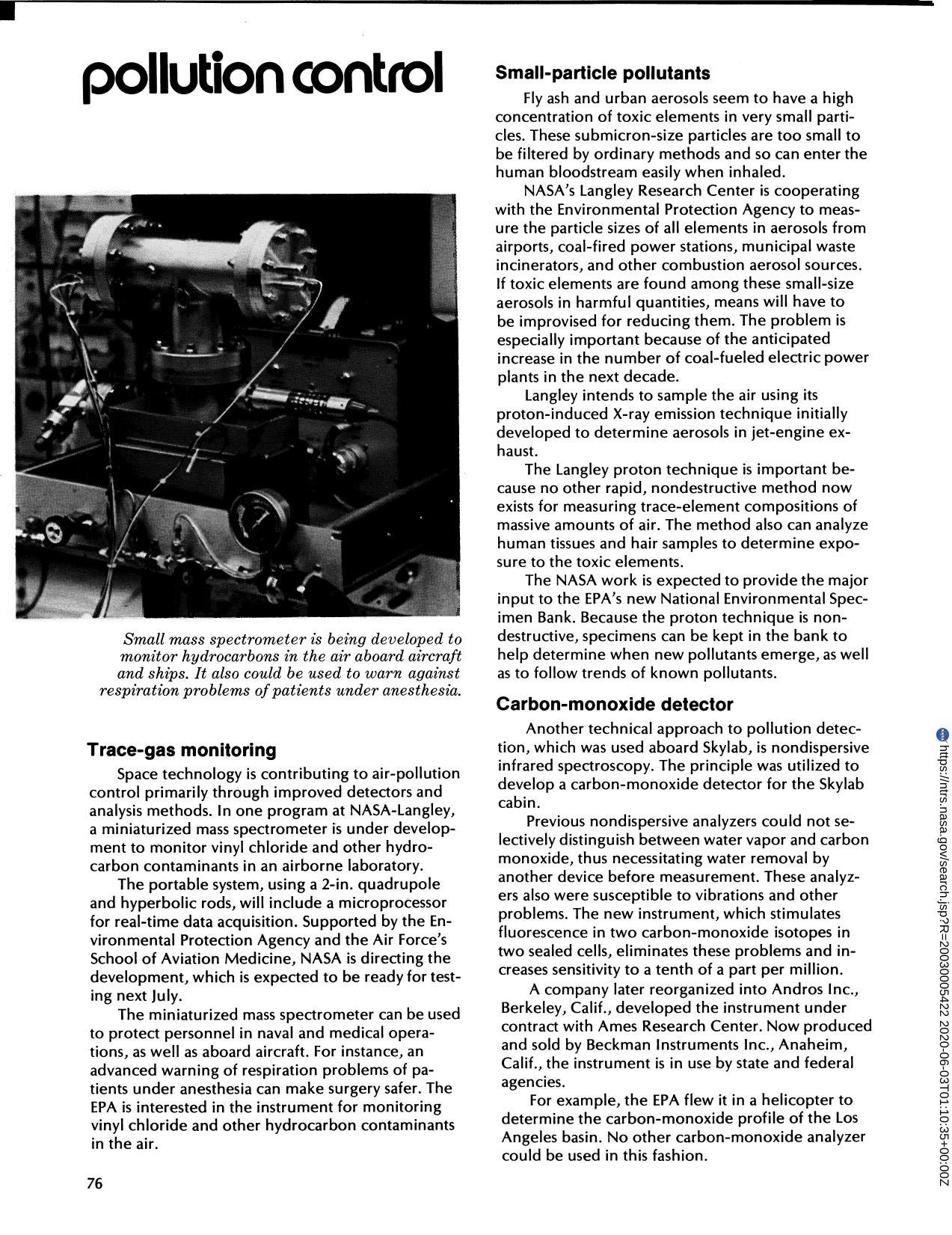
Small Particle Pollutants
Originally published in 1976
Body
NASA and the EPA are cooperating to measure particle size of all elements in aerosols from airports, coal-fired power stations, municipal waste incinerators, and other combustion aerosol sources. Langley intends to sample the air using its proton- induced x-ray emission technique initially developed to determine aerosols in jet-engine exhaust. Proton technique is important because no other rapid, nondestructive method now exists for measuring trace element compositions of massive amounts of air. Method can also analyze human tissue and hair samples to determine exposure to toxic elements.
Full article: http://hdl.handle.net/hdl:2060/20030005422
Abstract
NASA and the EPA are cooperating to measure particle size of all elements in aerosols from airports, coal-fired power stations, municipal waste incinerators, and other combustion aerosol sources. Langley intends to sample the air using its proton- induced x-ray emission technique initially developed to determine aerosols in jet-engine exhaust. Proton technique is important because no other rapid, nondestructive method now exists for measuring trace element compositions of massive amounts of air. Method can also analyze human tissue and hair samples to determine exposure to toxic elements.

Small Particle Pollutants

Small Particle Pollutants













